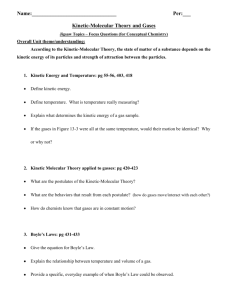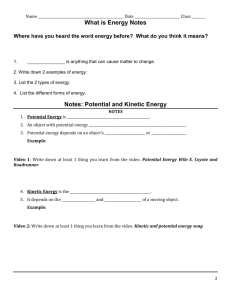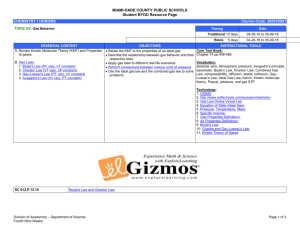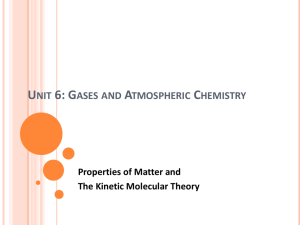Chapter 13 & 14 Jigsaw Topics
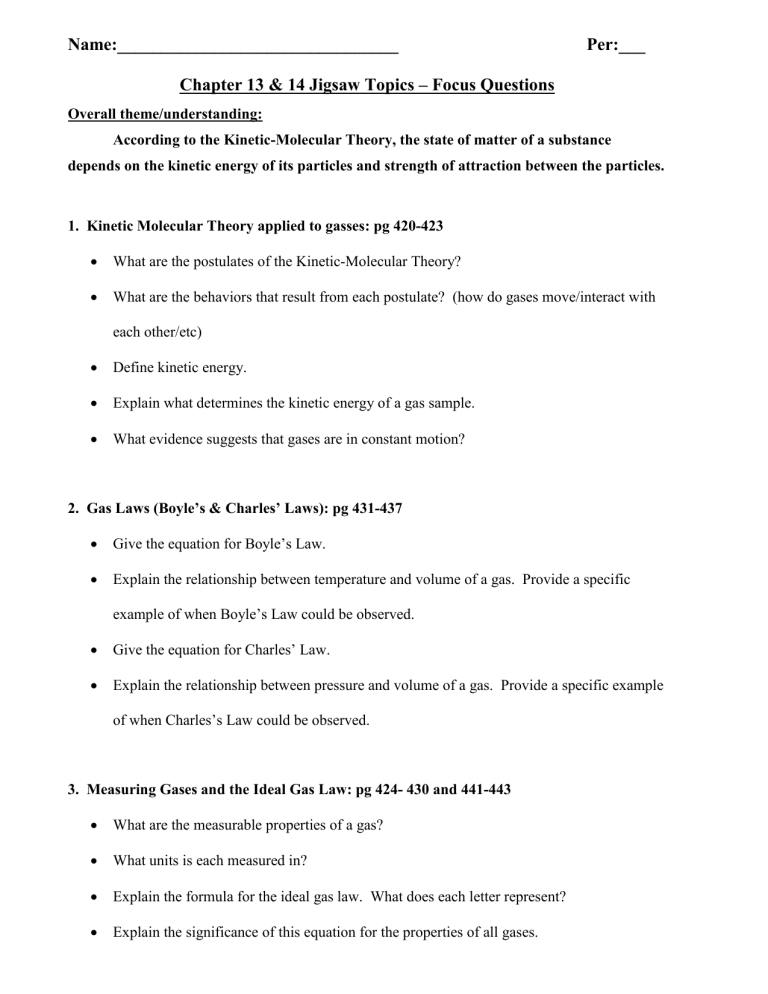
Name:________________________________ Per:___
Chapter 13 & 14 Jigsaw Topics – Focus Questions
Overall theme/understanding:
According to the Kinetic-Molecular Theory, the state of matter of a substance depends on the kinetic energy of its particles and strength of attraction between the particles.
1. Kinetic Molecular Theory applied to gasses: pg 420-423
What are the postulates of the Kinetic-Molecular Theory?
What are the behaviors that result from each postulate? (how do gases move/interact with each other/etc)
Define kinetic energy.
Explain what determines the kinetic energy of a gas sample.
What evidence suggests that gases are in constant motion?
2. Gas Laws (Boyle’s & Charles’ Laws): pg 431-437
Give the equation for Boyle’s Law.
Explain the relationship between temperature and volume of a gas. Provide a specific example of when Boyle’s Law could be observed.
Give the equation for Charles’ Law.
Explain the relationship between pressure and volume of a gas. Provide a specific example of when Charles’s Law could be observed.
3. Measuring Gases and the Ideal Gas Law: pg 424- 430 and 441-443
What are the measurable properties of a gas?
What units is each measured in?
Explain the formula for the ideal gas law. What does each letter represent?
Explain the significance of this equation for the properties of all gases.
4. Intra and Intermolecular Forces and resulting properties: pg 458 – 466
Define intramolecular and intermolecular force. What do the prefixes “intra” and “inter” mean?
What is stronger, intra or intermolecular forces?
Identify and explain the 3 intramolecular forces/bond types
Identify and explain the 3 types of intermolecular forces.
Of the intermolecular forces, which is the strongest? Weakest?
5. Kinetic Molecular Theory applied to liquids: pg 458- 460 and 467- 470
What determines whether a substance is a liquid at room temperature?
What are the properties of liquids? How are these properties explained by the Kinetic
Molecular Theory?
What is viscosity? What determines the viscosity of a liquid?
What is surface tension? What determines surface tension of a liquid?
6. Kinetic Molecular Theory applied to solids: pg 458-460 and 471- 478
What determines whether a substance is a solid at room temperature?
What are the properties of solids? How are these properties explained by the Kinetic
Molecular Theory?
Choose 2 of the categories of solids to compare. Explain how they are similar and different. Why?
